I know it has been a rainy spring but planning for a drier summer, or at least one with severe water restrictions, is going to be critical going forward. With the low snowpack on the mountains, this might be the year when our gardens are impacted by watering limitations reaching level 5, such as Merritt last August, when lawns and ornamental plants could no longer be irrigated by potable water from the tap.
If you think that this is a bit of an overreaction, then consider the fact that when the average 5/8” diameter hose is used for just one hour, about 1020 gallons of water have been dispensed. So, choosing perennials, shrubs and annuals that have low watering needs once established might be the best decision when facing the effects of climate change. With that in mind, here are some plant options for a Xeriscape or a garden that requires little or no irrigation.
Annuals or Summer Flowers
There might be some gardeners thinking about giving up on summer flowers with the water restrictions, but that would be a big mistake given the many drought-tolerant options available. The other persuasion here is that annuals planted in May quickly root and are ready for the summer heat much faster than some perennials.
Edge-of-the-Border Plants
For the edge of the border choose Portulaca grandiflora or Moss Rose with its succulent foliage and bright single to double blooms of just about any hue. Gazania is a South African native that also loves the heat. It tends to be offered in hot colours such as red, orange, and yellow (many bicolor), although pinks and whites are also available. Lantana is hardy in Central and South America, but here it is grown as a summer flower with rounded bicolor blooms that resemble Verbena, and it comes in both trailing and upright forms.
Larger-Scale Annual Plant
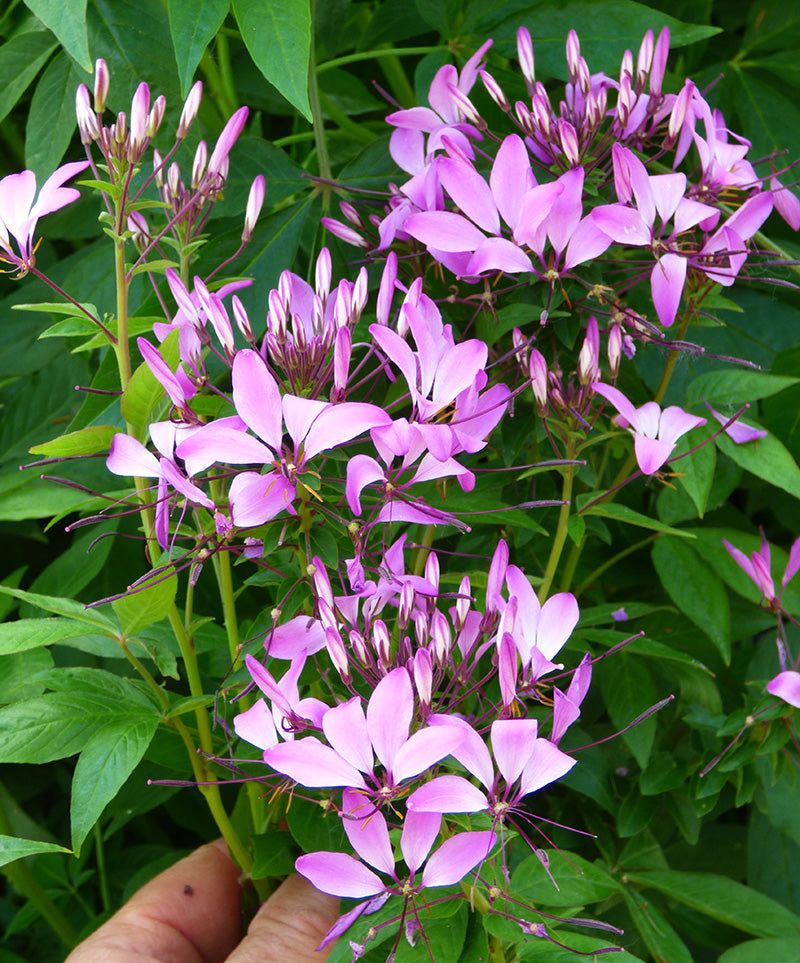
For a larger scale choose the South American native Cleome or Spider Flower, which is both deer and drought tolerant, bulking up to 2-4’ tall and 2’ wide, making it a great choice for filling spaces in the border background.
Perennials
This class of plants offers many Xeriscape options with great aesthetic appeal.
Perennials for Border Edges or Rockeries
For border edges or rockeries, Perennial Ice Plant (Delosperma) has beaded foliage with eye-catching starry blooms of yellow, pink, red, or copper, and sedums such as ‘Angelina’ or our native S. spathulifolium ‘Cape Blanco’ offer both beautiful foliage and flowers. Another overlooked choice for the rock garden is Donkey-Tail Spurge (E. myrsinites), although most members of this family are equally drought tolerant.
Silver-Leaved Perennials
Any silver-leaved perennial including Artemisia (such as ‘Powis Castle’), Lychnis coronaria (Rose Campion), Russian Sage (Perovskia) or Senecio greyi combine fantastic foliar contrast with low water needs.
Taller Perennials
For a little more height choose Yarrow (Achillea millefolium), Crocosmia ‘Emily McKenzie’ (burnt orange) or ‘Lucifer’ (flaming red), Euphorbia characias ‘Wulfenii’ and any of the Pampas Grasses (Cortaderia) with their elegant plumes.
Shrubs
Winter-Hardy Shrubs
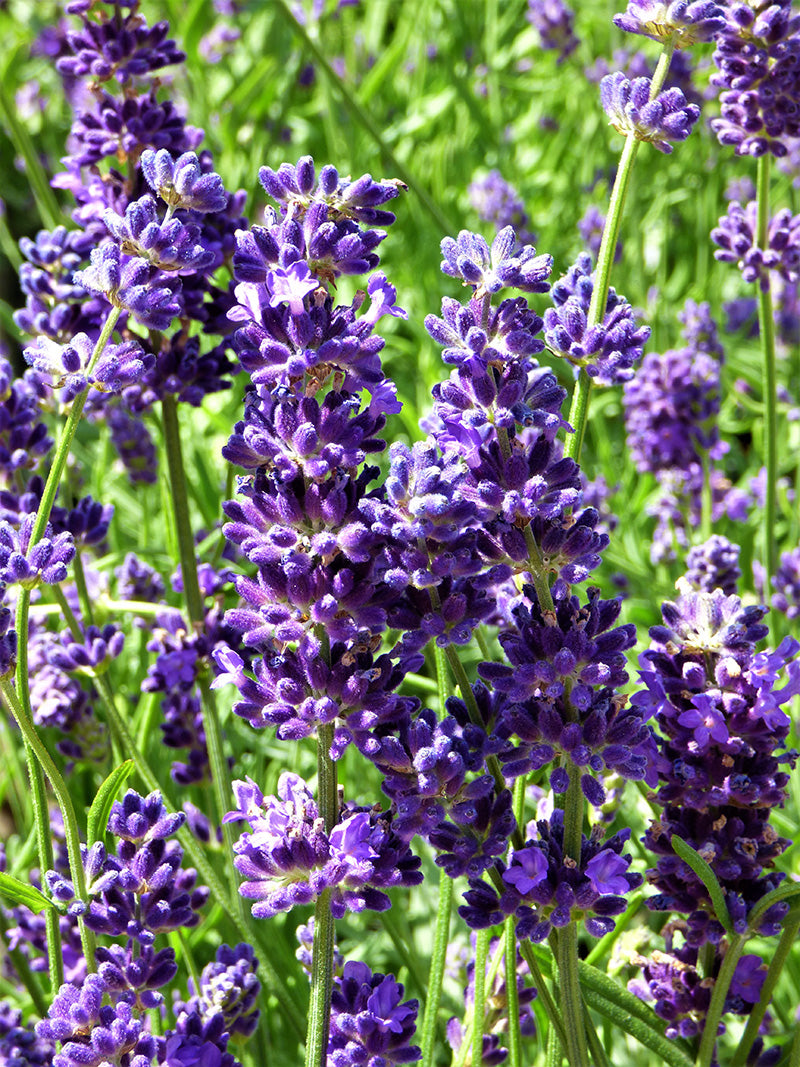
(English Lavender [L. angustifolia])
The best place to start here is with Lavender, with the hardier English (L. angustifolia) and Provence (L. x intermedia) being the best choices to survive winter. Japanese Barberry (Berberis thunbergii) covers all your bases with cold hardiness, drought tolerance, and beautiful foliar contrast of gold or burgundy leaves, with the most common choices being ‘Concorde’ (compact) and ‘Rose Glow’ (variegated foliage).
Blue-Flowered Shrubs
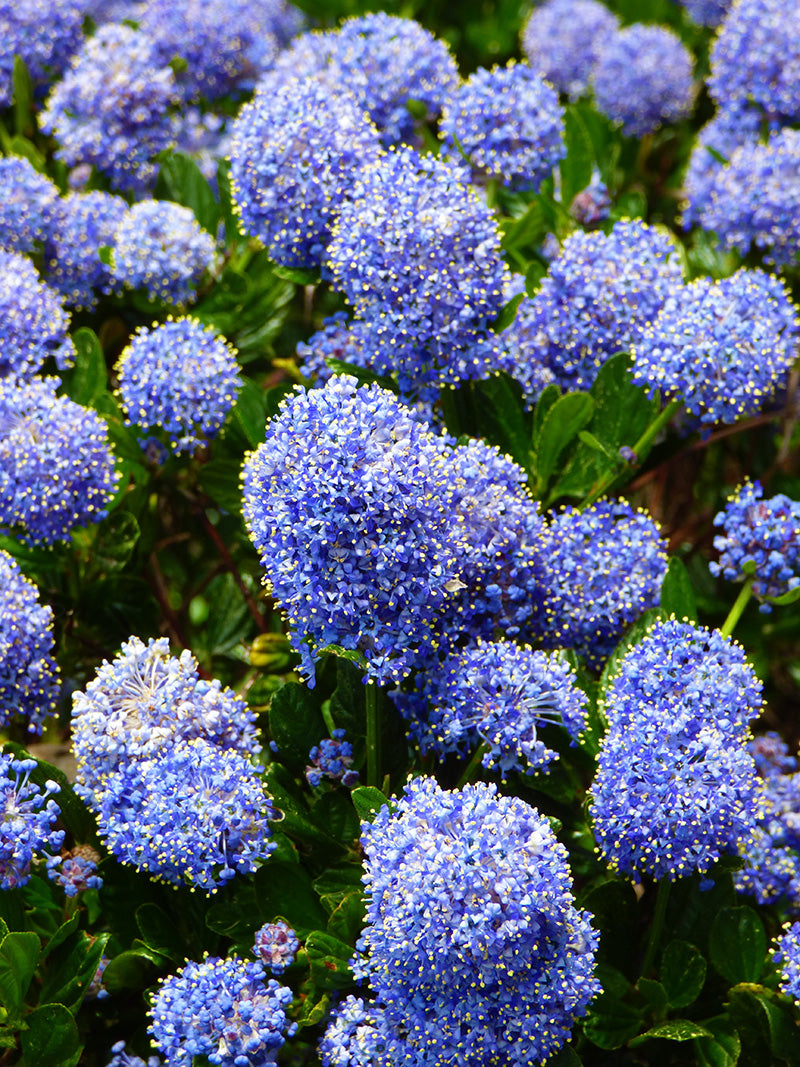
(California Lilac [Ceanothus ‘Victoria’])
Blue flowers are fairly common in this category with California Lilac (Ceanothus ‘Victoria’), Blue Spirea (Caryopteris) and Butterfly Bush (Buddleia), although the latter comes in many other colours, now with sterile flowers so they don’t become invasive.
Foliage Shrub
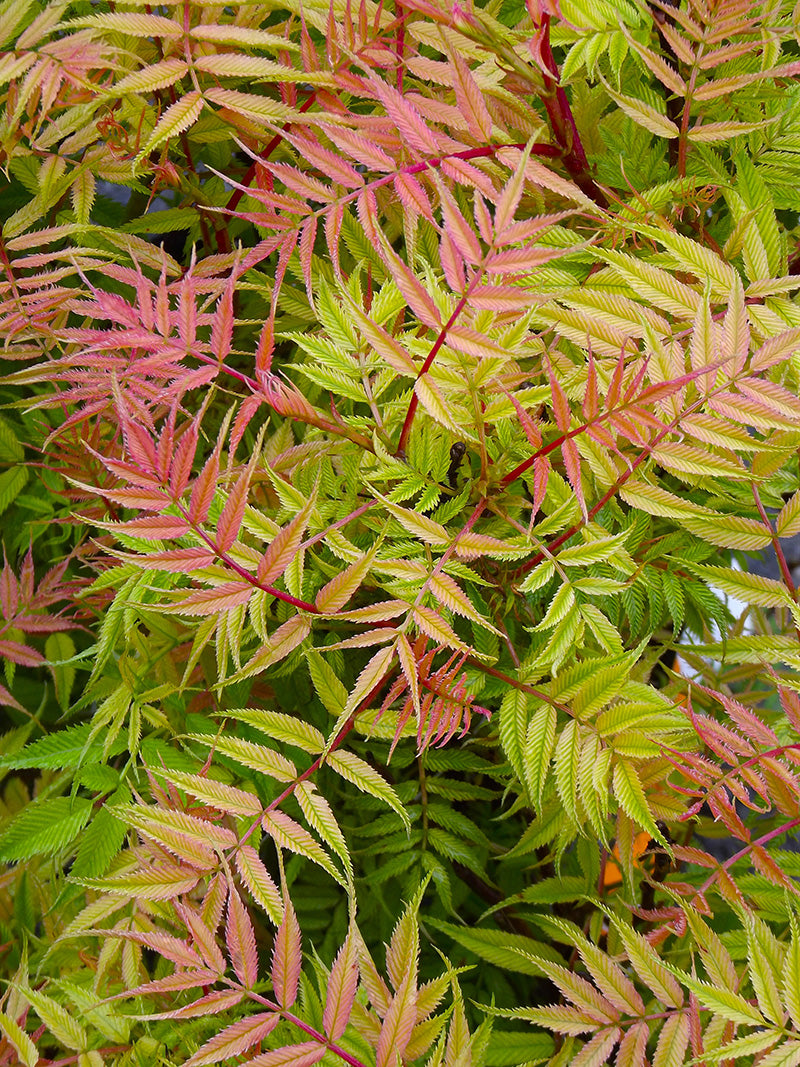
One lesser-known drought- and heat-tolerant foliage shrub is Sorbaria sorbifolia ‘Sem’ whose fine-cut Sumac-like foliage emerges with hints of gold, pink, and lime green, which are followed by white plumes.
Native Shrubs
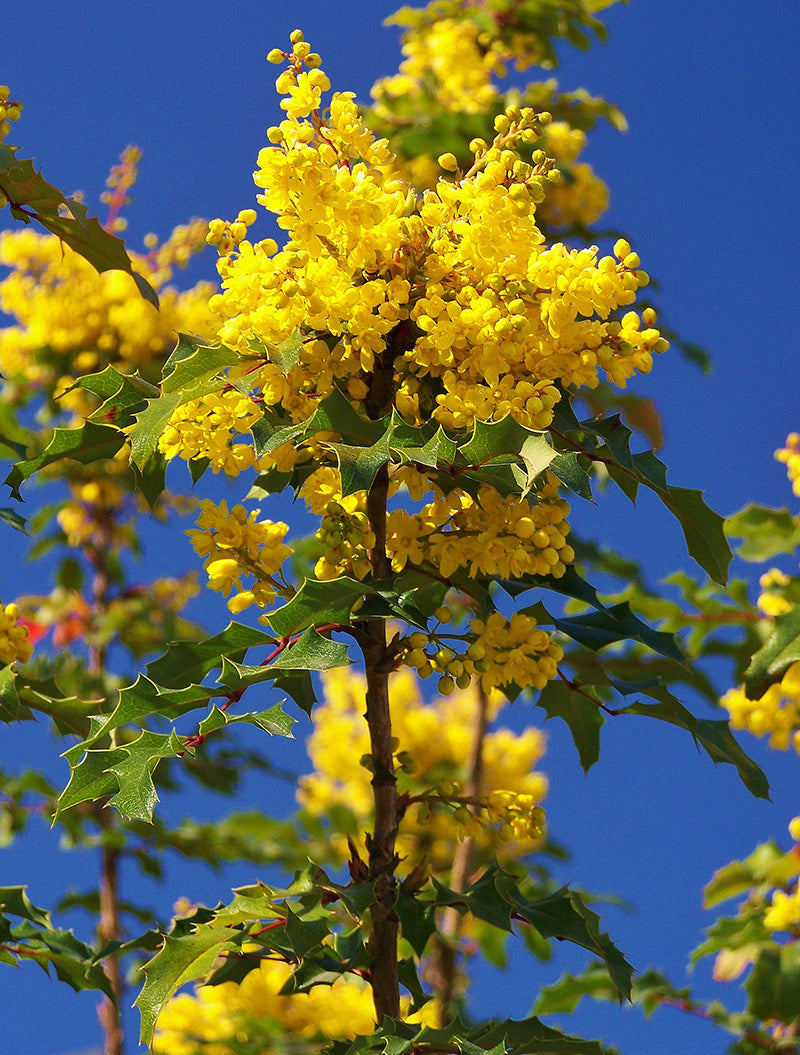
(Oregon Grape [Mahonia aquifolium])
Native shrubs also earn their keep here, with both Red-Flowering Currant (Ribes sanguineum) and Oregon Grape (Mahonia aquifolium) tolerating drought rather well while also being very pollinator and hummingbird friendly.
End-of-Season Shrub
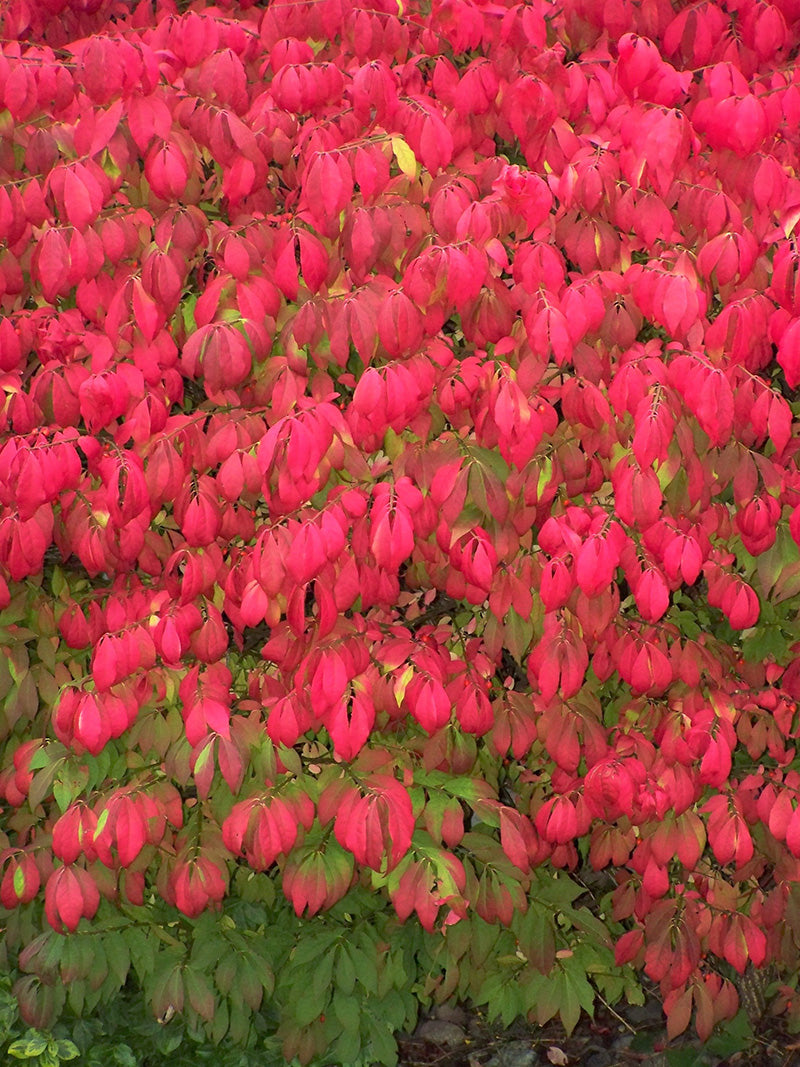
You can end the season with Burning Bush (Euonymus alatus), which earns its name by shifting from a nondescript green to an eye-popping rose-red in a matter of days once the autumn weather begins to cool.
Of course, drought-tolerant perennials and shrubs still need to have an established root system before they face those dry periods, so pay close attention to them during their first summer. After that, you’ll find one of your best garden investments to be several inches of fine bark mulch, which helps to hold and direct moisture to the soil below, moderate soil temperature from sun exposure, and negate the drying effects of wind.
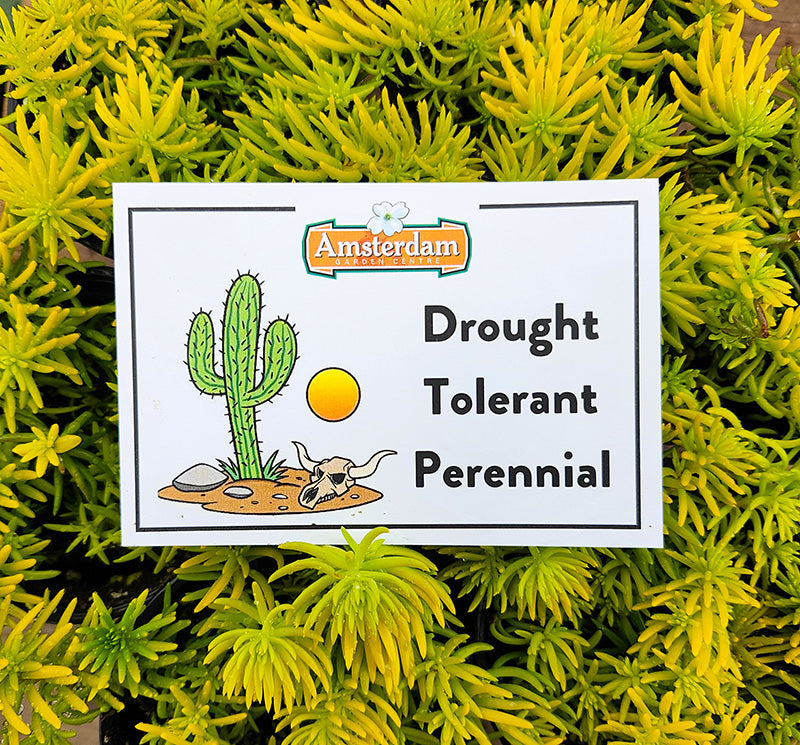
At the nursery, we will also be guiding you with drought-tolerant signage in both our perennial and bedding houses, to help you make those water-wise choices.
All images Copyright 2024 MK Lascelle


